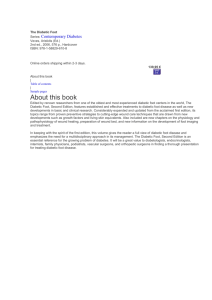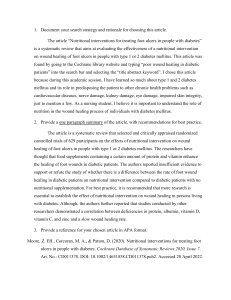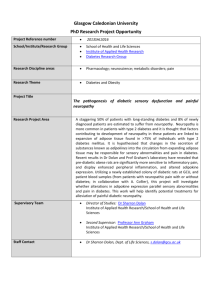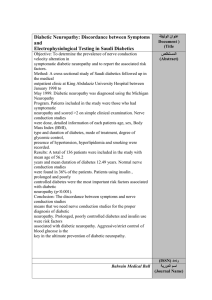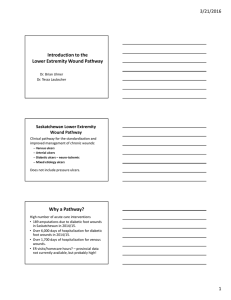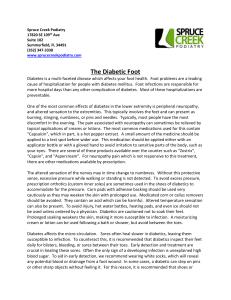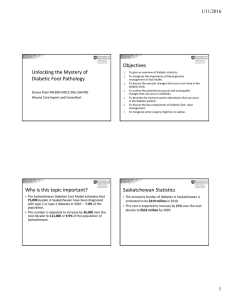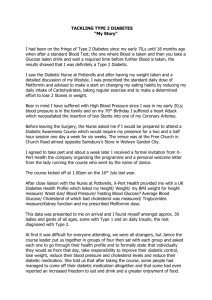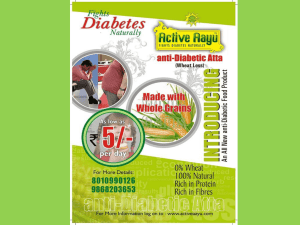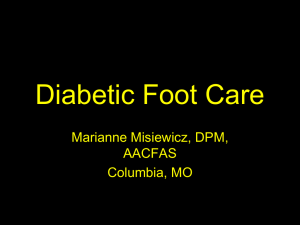Diabetic neuropathies are a family of nerve disorders caused by
advertisement
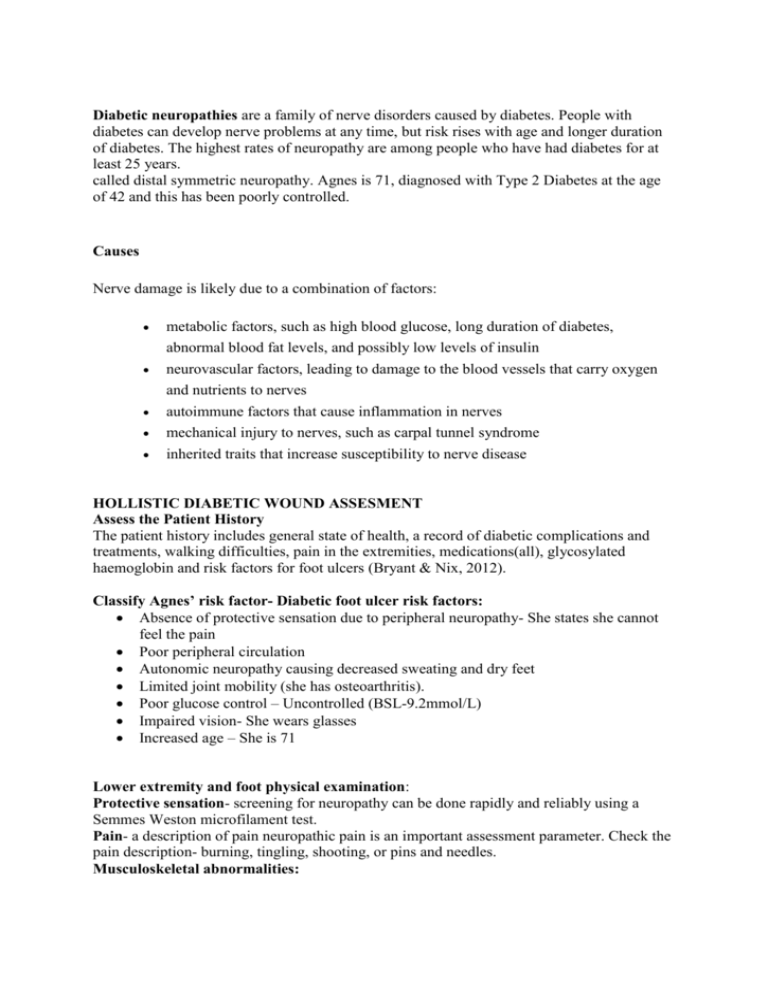
Diabetic neuropathies are a family of nerve disorders caused by diabetes. People with diabetes can develop nerve problems at any time, but risk rises with age and longer duration of diabetes. The highest rates of neuropathy are among people who have had diabetes for at least 25 years. called distal symmetric neuropathy. Agnes is 71, diagnosed with Type 2 Diabetes at the age of 42 and this has been poorly controlled. Causes Nerve damage is likely due to a combination of factors: metabolic factors, such as high blood glucose, long duration of diabetes, abnormal blood fat levels, and possibly low levels of insulin neurovascular factors, leading to damage to the blood vessels that carry oxygen and nutrients to nerves autoimmune factors that cause inflammation in nerves mechanical injury to nerves, such as carpal tunnel syndrome inherited traits that increase susceptibility to nerve disease HOLLISTIC DIABETIC WOUND ASSESMENT Assess the Patient History The patient history includes general state of health, a record of diabetic complications and treatments, walking difficulties, pain in the extremities, medications(all), glycosylated haemoglobin and risk factors for foot ulcers (Bryant & Nix, 2012). Classify Agnes’ risk factor- Diabetic foot ulcer risk factors: Absence of protective sensation due to peripheral neuropathy- She states she cannot feel the pain Poor peripheral circulation Autonomic neuropathy causing decreased sweating and dry feet Limited joint mobility (she has osteoarthritis). Poor glucose control – Uncontrolled (BSL-9.2mmol/L) Impaired vision- She wears glasses Increased age – She is 71 Lower extremity and foot physical examination: Protective sensation- screening for neuropathy can be done rapidly and reliably using a Semmes Weston microfilament test. Pain- a description of pain neuropathic pain is an important assessment parameter. Check the pain description- burning, tingling, shooting, or pins and needles. Musculoskeletal abnormalities: Loss of motor nerve function affects the intrinsic foot muscles causing weakening and changes to foot structure and muscle wastage. Skin and nail condition: Conditions of these are important. Loss of sweating and oil production may cause cracking of skin causing fissures that can get infected. Callus formation is a natural protective response to repetitive stress. Footwear: Evaluation of footwear is important. Check for bulges on outside of shoes, wear patterns on soles of feet, wearing down on heels, shoe cushioning, and foreign object in shoe (Bryant & Nix, 2012). Diabetic foot ulcer evaluation: Common locations of foot ulcers: Metatarsal head inter-digital is caused by high pressure, limited joint flexibility, increased moisture, footwear too narrow, toe crowding, and deformity. Patient’s foot ulcer is rarely caused by infection rather ulcers provide a portal for pathogen entry which starts thriving because of impaired host response (Bryant & Nix, 2012). Measure the size of the wound- Measure the size of the wound with a measuring tape so that we know the wound is improving with treatment. Blood cell count- A complete blood count should be done. Leukocytosis may signal plantar abscess or other associated infection. Wound healing is impaired by anaemia. In the face of underlying arterial insufficiency, anaemia may precipitate rest pain (Rowe, 2011). Serum glucose- Assessment of serum glucose, glycohaemoglobin and creatinine levels helps to determine the adequacy of acute and chronic glycemic and the status of renal function (Rowe, 2011). Additional Assessment: Assess patient, family and carer knowledge about Type 2 Diabetes and its complications to gain an understanding of what they know. Educate patient, carer and family on how to take care of Diabetic Ulcers so that it decreases the likelihood for any serious complications on Agnes’ health such as leg amputations or skin necrosis. Liaise with multidisciplinary teams such podiatrist for feet cares, general practitioner, dietician, district nurse, so that she has the proper care and that her diabetes is being controlled. Liaise with physiotherapy for mobility and occupational therapy for Activities of Daily living (ADL’s) Ensure that Agnes is on a well balanced diet to promote efficient wound healing. Educate Agnes about Peripheral Neuropathy in simple terms so that she can understand why she cannot feel the pain and explain the importance of early intervention in taking care of the wound so that it would not lead to further complications Reference: Brown, D., & Edwards, H. (2005). Lewis’s medical-surgical nursing Assessment and Management of Clinical Problems. NSW Australia: Elsevier Moby Bryant, D., & Nix, D, P (2012). Acute and Chronic Wounds Current Management Concepts 4th ed. NSW Australia: Elsevier Moby. Rowe, V.L. (2011). Diabetic Ulcers. Retrieved on 13 July, 2011, from http://emedicine.medscape.com/article/460282-overview
